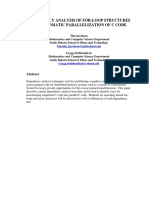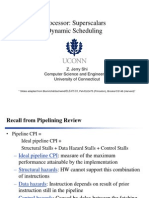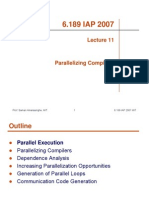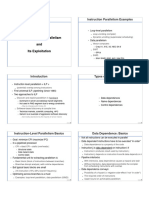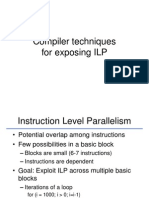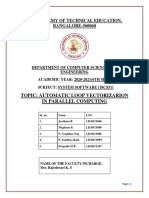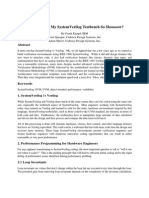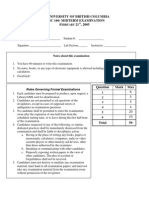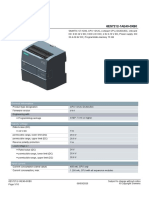0% found this document useful (0 votes)
10 views44 pagesPDC Lecture 04
The document discusses key concepts in parallel and distributed systems, focusing on modern CPU architecture, dependencies in programming, and loop optimization techniques. It highlights the importance of managing data and control dependencies to ensure correct execution order and presents various loop optimization strategies to enhance performance. Additionally, it covers the significance of semantically equivalent programs and the analysis of data dependencies for effective loop restructuring and parallelization.
Uploaded by
arhamkhan4241Copyright
© © All Rights Reserved
We take content rights seriously. If you suspect this is your content, claim it here.
Available Formats
Download as PDF, TXT or read online on Scribd
0% found this document useful (0 votes)
10 views44 pagesPDC Lecture 04
The document discusses key concepts in parallel and distributed systems, focusing on modern CPU architecture, dependencies in programming, and loop optimization techniques. It highlights the importance of managing data and control dependencies to ensure correct execution order and presents various loop optimization strategies to enhance performance. Additionally, it covers the significance of semantically equivalent programs and the analysis of data dependencies for effective loop restructuring and parallelization.
Uploaded by
arhamkhan4241Copyright
© © All Rights Reserved
We take content rights seriously. If you suspect this is your content, claim it here.
Available Formats
Download as PDF, TXT or read online on Scribd
/ 44










